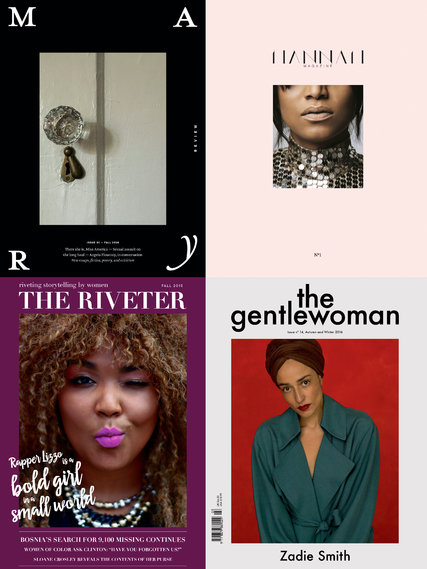 It was a pivotal moment for journalism student Joanne Demkiewicz.
It was a pivotal moment for journalism student Joanne Demkiewicz.
In early 2013, the University of Missouri journalism student went to hear Esquire writer Mike Sager talk about his new book celebrating young writers. But there was a problem.
“I looked around, and almost the entire room was filled with women,” Ms. Demkiewicz said in an interview with Jennifer Miller in the New York Times. “And then someone raised her hand and said, ‘Why are there only three women in this collection?’”
Sager didn’t have a good answer…at least one that was good enough to satisfy the largely female audience. According to Miller, he gave up trying to explain it away, then challenged the crowd, saying “Why don’t you guys do something about this?”
It was the beginning of something momentous for Demkiewicz and her soon-to-be publishing partner Kaylen Ralph.
“The result was The Riveter, an online and quarterly print magazine featuring narrative journalism by women,” Miller notes. “Ms. Demkiewicz and Ms. Ralph funded the first year of the magazine through Kickstarter. Mr. Sager helped with publicity and hired them to edit his next book — a collection devoted to female journalists. The sixth issue will be published this month.”
They’re not alone in trying to redefine how women’s voices are used in print and in the publishing industry, where writing by women about women often limits their exposure in traditional outlets. So these women are boldly starting their own publications.
“At least five new publications with women at the helm have started since 2010, running deeply reported articles on culture, politics and style that are often several thousand words. The magazines seek to redefine how women are portrayed in print, and who might want to read stories by and about them,” Miller notes.
And they are not just drawing female readers, proof that what these women have to say cannot simply be put in the “women’s issues” silo. Mary Review, a publication that is “by women, for everyone,” has a male audience of 30 percent.
The market is noticeably changing, Miller notes.
“Recently, Cosmopolitan, once known for offering tips on how to please men, has built a reputation for producing really smart, well-reported, sharp, valuable stories, and Teen Vogue has run stories on President Trump and sexism and the position of Vice President Mike Pence on reproductive rights,” she writes.
That trend in mass market titles echoes the growing presence of strong female voices in the field who go much deeper than the typical fashion glossy. Publications like The Establishment offer women writers an opportunity to cover topics far broader than the traditional “women’s interest” stories. They now boast a male audience of 30-35%.
These women want to see themselves reflected in their pages – real, fully dimensional humans…who are also women.
